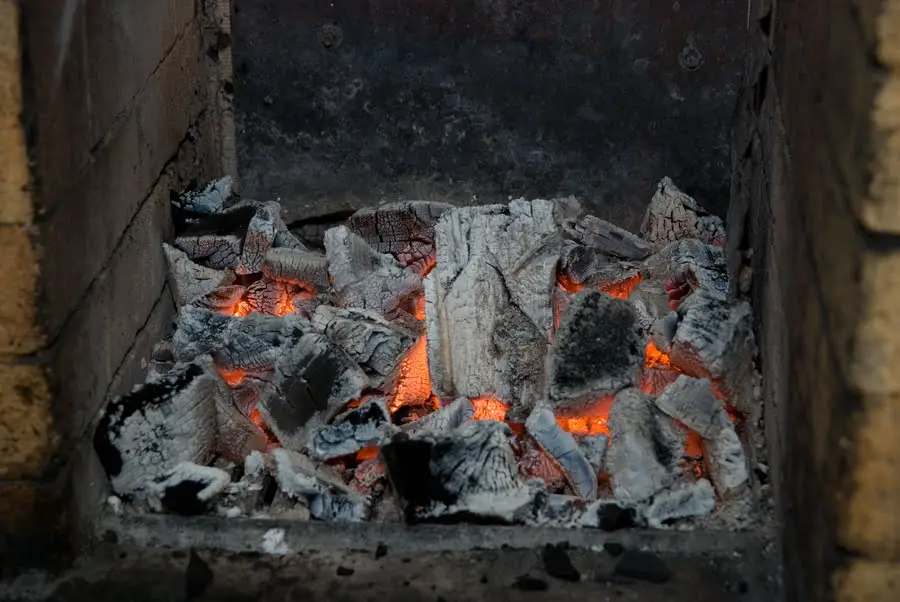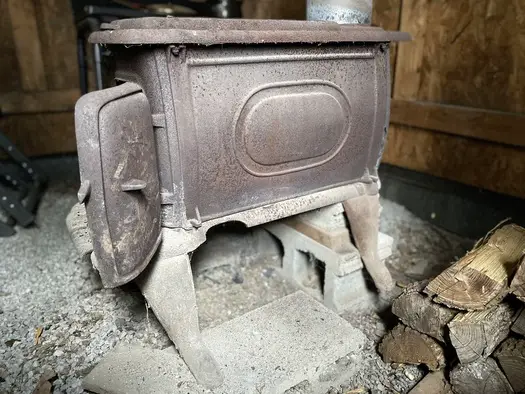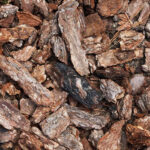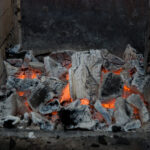Regardless of how useful and charming they may be, wood stoves can produce a lot of ashes. Many wood stove users aren’t too sure about if and how they need to dispose of wood stove ashes.
With that in mind, today we will be looking at how to properly dispose of wood stove ashes.
Without further ado, let’s consider these simple and short cleaning and removal methods!
Table of Contents
- 1. Let the Ashes Cool
- 2. Soak and Transfer the Ashes to a Metal Container
- 3. Pour the Ashes Into a Sealed Trash Bag
- 4. Choose Your Desired Disposal Method
1. Let the Ashes Cool
Wood stove ashes need to cool to remove the embers before you throw them out. According to Montgomery County MD, wood stove ashes can stay hot long enough to spark fires several days after the fire goes out.
Never dispose of the wood stove ashes until they’re cool to the touch. Otherwise, you’ll want to wait to throw them out if embers are in the ashes since they can quickly spark a new fire.
Do you need some help cooling down your stove? Check out these 5 methods to quickly and safely cool down your stove.

If you can’t wait several days for the ashes to cool, consider these methods:
- Use a handheld mister to cool and dampen the ashes, extinguishing the embers.
- Cover the wood stove with its lid to prevent oxygen from heating the ashes.
- Sprinkle sand on the ashes since it naturally cools them and stops sparks from escaping the wood stove.
Avoid the following methods since they can cause further issues:
- Don’t use blow dryers to cool the ashes, as they’ll blow all over the place and potentially cause fires.
- Never vacuum ashes, regardless of their temperature. This will cause a much bigger mess, making it harder to properly dispose of them.
2. Soak and Transfer the Ashes to a Metal Container
Ashes should be transferred into a metal container and soaked thoroughly with water. Soaking wood stove ashes serves two purposes:
- It makes them less likely to blow away when you pour them into a new container.
- It ensures that there aren’t any leftover embers that could cause fires.
The City of Portland suggests placing the soaked wood stove ashes into a metal container, then sealing it. It’s also a good idea to keep the ashes out of your home and away from nearby structures and other flammable materials.
Sealing the metal container is an excellent way to prevent oxygen from igniting the ashes or letting wind and rain blow them away.
It’s also a safety precaution because breathing wood ashes, or accidentally letting your pets eat them, can be extremely hazardous.
3. Pour the Ashes Into a Sealed Trash Bag

Pour the soaked ashes into a sealed trash bag, as sealing and properly disposing of your wood ashes is the safest way to get rid of them legally. It’s also a great way to make sure you’re following the law even if you are living in the wilderness.
Of course, if you’re living off the grid, you could also use wood stove ashes as a fertilizer.
Wherever you are, you’ll want to know how to deal with wood stove ashes to prevent fires and smoke.
You can choose to dump the soaked ashes into the aforementioned trash bag or keep them in the metal container if you want to give them to one of the locations in the following section.
4. Choose Your Desired Disposal Method
There are many ways to dispose of wood stove ashes, all of which avoid breaking local laws and regulations. Dumping wood ash, or any other ashes, without following the proper procedures can turn into littering charges.
In any case, it may help you to reduce the amount of ashes and dust that your wood stove produces in the first place. Then, you will have less to worry about in terms of disposal.
Here are the three best ways to dispose of wood stove ashes:
Seal the ashes and throw them into your garbage can. This is perhaps the most common and easiest way to eliminate your wood stove ashes.
Not only do you not have to worry about bringing them elsewhere, but you can usually fit several bags of soaked ashes inside the can.
Look for a local disposal company near you. Many garbage companies will accept wood ashes, but you can also ask local farms if they need them.
Farmers often use ashes because they prevent bacterial growth, pests, and many other contaminants that can damage their crops.
Consider reusing the ashes if you have a big yard or need fertilizer.
Wood ashes contain several vital garden nutrients, including magnesium, nitrogen, and phosphorus. You can sprinkle the ashes and mix them into the soil or mix them into your compost pile.
Wood ashes can also be sprinkled on snow and ice, as they prevent tripping and slipping hazards. However, it’s important to soak them beforehand to prevent them from blowing away with the breeze.
Check with your local authorities to ensure this method is allowed, and only do it on your property.





